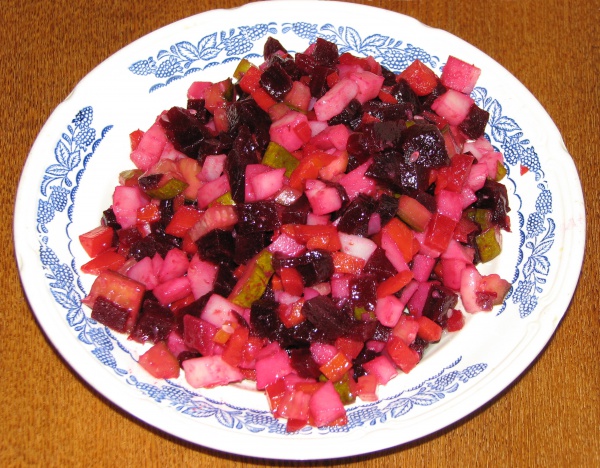Facts About Vinegret
Vinegret, also known as Russian vinaigrette, is a cherished salad in Russian cuisine that has also gained popularity in other post-Soviet states. This vibrant salad typically features diced cooked vegetables like beets, potatoes, and carrots, along with chopped onions, sauerkraut, and/or brined pickles. Some recipes also incorporate green peas or beans for additional texture and flavor.
Despite its name, contemporary vinegret recipes often omit vinegar, favoring a drizzle of sunflower or another vegetable oil instead. Some cooks prefer to add a bit of brine from pickled cucumbers or sauerkraut to enhance the tangy taste.
Vinegret is a staple at celebratory gatherings within Russophone communities, frequently served alongside other festive dishes like Olivier salad and dressed herring as part of a zakuska spread. The concept of mixing diced cooked vegetables with a vinegar-based dressing originates from 19th-century Western European cuisine. Over time, the term vinegret has come to specifically refer to mixed salads that prominently feature beets. While traditional recipes might include mushrooms, meat, or fish, these ingredients are less common in today's versions.
Similar beetroot-based salads can be found in Northern European cuisines. For instance, herring salad and beetroot salad are popular in North German and Scandinavian traditions, while the Finnish dish rosolli bears a close resemblance. Interestingly, the name rosolli comes from the Russian word "rassol" meaning brine, highlighting the culinary connections and influences between these regions.

 Azerbaijan
Azerbaijan